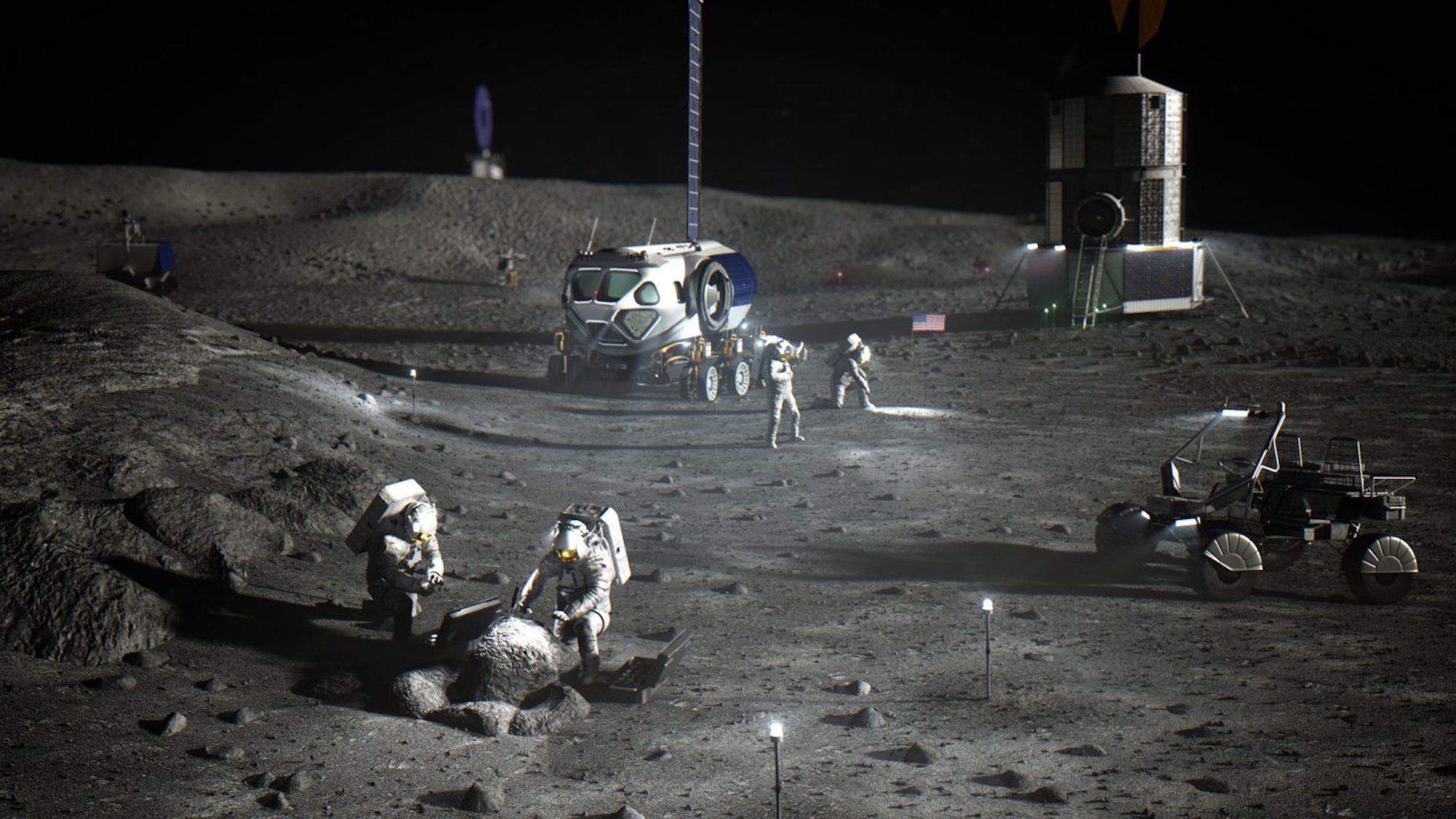

Nuclear fuel cells the size of poppy seeds could power NASA’s Artemis lunar base once it begins operations around 2030. Designed by researchers at Bangor University’s Nuclear Futures Institute in the UK, the miniscule power source—dubbed “Trisofuel”—is intended to run on a micro nuclear generator roughly the size of a small car created by Rolls Royce. According to a report in the BBC, engineers intend to begin fully testing their new fuel within the next few months. If successful, Trisofuel’s uses could even extend far beyond the moon’s surface.
Momentum is quickly building towards establishing a permanent human presence on the moon, likely near its south pole where scientists hope to find water-based ice to help support habitation. NASA’s ongoing Artemis project is making progress towards its proposed end-of-decade base construction, most recently with its first successful mission in November 2022. Last month, India made history as the fourth nation to land a probe on the moon via its Chandrayaan-3 spacecraft, as well as the first to do so at the lunar south pole.
[Related: India’s successful moon landing makes lunar history.]
Given its size and relative power, a resource like Trisofuel could be vital to lunar bases’ success. With its portability, however, the new nuclear fuel cell could easily be adapted to a range of other scenarios, both here on Earth and beyond. Phylis Makurunje, a researcher involved Trisofuel testing, explained to the BBC that the tiny fuel pellets could be used to power rockets that one day take humans to Mars. “It is very powerful—it gives very high thrust, the push it gives to the rocket. This is very important because it enables rockets to reach the farthest planets,” Makurunje explained.
Trisofuel may be so strong, in fact, that it could nearly halve the time it takes to reach the Red Planet—from an estimated nine months down to between four-to-six months. “Nuclear power is the only way we currently have to provide the power for that length of space travel,” Bangor University professor Simon Middleburgh said in a release. “The fuel must be extremely robust and survive the forces of launch and then be dependable for many years.”
At a much more localized level, researchers believe that micro generators running Trisofuel could also be deployed to disaster zones with compromised electrical grids.
Having a reliable, powerful fuel source is one thing—having structures to house such systems is another hurdle altogether. Of course, researchers are currently hard at work optimizing construction options for proposed lunar base designs. Potential building materials could even be drawn from the moon itself, using lunar regolith to reinforce 3D-printed bricks to compose base structures.
